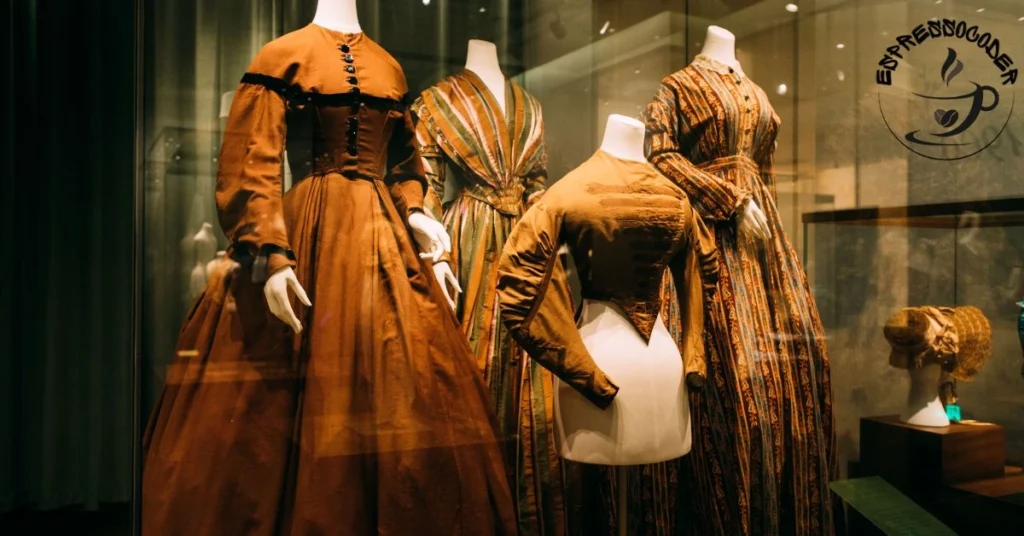Cities are a blend of architecture, culture, and history. Each city’s unique identity is shaped by its buildings, food, and the stories preserved in its museums. This combination of architecture, food culture, and historical museums creates a rich tapestry that tells the tale of a place’s past and present.
City architecture is more than just structures. It reflects the values, history, and evolution of a city. From ancient ruins to modern skyscrapers, the buildings around us give us insight into different eras and the people who built them. Cities like Rome, Lisbon, and Washington, D.C., are perfect examples of how architecture can tell a story through time.
Food culture is another key aspect of a city’s identity. It’s often said that the best way to understand a place is through its food. In cities around the world, food reflects not only local traditions but also the influence of history. From Roman trattorias to Portuguese seafood markets, each dish has a history tied to the land, the people, and the buildings that surround it.
Historical museums serve as the keepers of a city’s narrative. They preserve artifacts, stories, and memories of the past, offering visitors a chance to connect with history. The architecture of these museums often mirrors the importance of the collections they house. Famous museums, such as the Smithsonian in Washington, D.C., are as much a part of a city’s architectural landscape as its landmarks.
Together, architecture, food, and museums shape our experience of cities. They are a window into the past and present, helping us understand the soul of a place.
Also read:https://espressocoder.org/orderkens-com/
The Role of Architecture in Shaping City Identity
Architecture as a Reflection of Culture and History
Architecture is one of the most visible ways a city expresses its identity. Buildings tell the story of a city’s culture and its history. From grand structures like ancient Roman ruins to modern designs, architecture shows how cities evolve.
Different architectural styles emerge from historical events and cultural shifts. For example, the Renaissance architecture of Italy represents the rebirth of art and learning. Similarly, modern skyscrapers represent a city’s growth and progress in the 21st century.
Preserving Historical Landmarks and Modern Urban Design
Preserving historical landmarks is important to maintain a city’s heritage. Cities like Rome and Lisbon have kept their historical buildings intact while embracing modern architecture. This balance between old and new gives cities a unique charm.
Modern urban design also focuses on sustainability and environmental impact. Green buildings, parks, and eco-friendly designs are becoming more common. Cities aim to combine their historical roots with future-oriented designs.
Famous Architectural Landmarks Around the World
Some cities are known for their famous architecture, attracting visitors from around the world. Rome, with its ancient ruins, and Washington, D.C., with its Neoclassical architecture, are prime examples. These cities blend architectural styles that reflect their history and cultural significance.
In Lisbon, the architecture reflects the city’s recovery from a devastating earthquake in 1755. The buildings in Lisbon showcase a mix of historical and modern styles. This diversity adds to the richness of the city’s urban landscape.
Exploring Food Culture as a Reflection of City History
How Architecture and Food Culture Connect
Food and architecture are closely linked in many cities. Historical buildings often house famous restaurants or food markets. These places offer a unique experience by blending the city’s architectural beauty with its culinary heritage.
Many cities reflect their food culture in their architecture. For example, ancient markets in Italy or seafood restaurants in Portugal often preserve traditional design. These spaces give visitors a taste of history, both in the food and in the architecture.
Food as a Story of Tradition and Innovation
Food culture is deeply rooted in tradition, often passed down through generations. In Rome, for instance, dishes like pasta and bread have been made the same way for centuries. These recipes reflect the history of the city and its people.
At the same time, food culture evolves with modern trends. Cities like Lisbon blend traditional seafood dishes with modern cooking techniques. This fusion of old and new reflects how cities evolve over time, just like their architecture.
Case Studies of Food Culture in Different Cities
Each city has its own unique culinary story. In Lisbon, the food is influenced by Portugal’s maritime history, with seafood as a key part of the diet. Many restaurants are located in historic buildings, offering an authentic dining experience.
In Rome, the food culture ties closely to its Renaissance architecture and traditions. Dishes are often served in family-owned trattorias housed in centuries-old buildings. The atmosphere of these restaurants adds to the richness of the dining experience.
In the Dominican Republic, the food reflects a mix of African, Spanish, and indigenous influences. This fusion cuisine tells the story of colonization and cultural blending. Dominican food recipes showcase the island’s vibrant history and traditions.
Historical Museums: Guardians of City Narratives
The Importance of Historical Museums
Historical museums play a key role in preserving a city’s past. They safeguard artifacts, documents, and stories that tell the city’s history. By visiting these museums, people can connect with a city’s cultural heritage.
Museums are not just about what’s inside. The museum architecture itself often reflects the importance of the history it holds. Many museums are housed in buildings that are architectural masterpieces, adding another layer to the cultural experience.
Famous Historical Museums in Iconic Cities
Some cities are famous for their historical museums that attract millions of visitors. In Rome, the Capitoline Museums are housed in Renaissance architecture and hold collections of ancient Roman art and history. These museums are central to understanding the city’s past.
In Washington, D.C., the Smithsonian museums are known for their vast collections and Neoclassical architecture. The museums hold exhibits on American history, science, and art, making them a key part of the city’s cultural landscape.
Lisbon is home to the Museu de Lisboa, a museum that traces the city’s history from ancient times to the present. Its building combines both historical and modern architecture, showing Lisbon’s recovery from past disasters like the 1755 earthquake.
Family-Friendly Museums with Interactive Experiences
Many museums today are designed to be family-friendly, offering interactive exhibits. These museums cater to children and families by making history fun and engaging. Examples include the Museums of Illusion in Washington, D.C., where exhibits challenge perceptions and invite hands-on exploration.
Interactive museums help young visitors connect with history in an exciting way. These museums offer a mix of education and entertainment, ensuring visitors of all ages have a memorable experience. Families can learn together while enjoying the rich history of the city.
How Architecture, Food, and Museums Shape a Traveler’s Experience
The Multi-Sensory Experience of Exploring a City
When traveling, the architecture, food culture, and historical museums combine to create a full, immersive experience. Walking through a city’s streets, visitors can admire famous architecture while enjoying the smells and tastes of local food. Museums further enrich this experience by offering a glimpse into the city’s history.
Travelers get to experience a city through their senses. City architecture sets the scene, food brings the culture to life, and museums tell the stories behind it all. Together, they shape a visitor’s understanding and enjoyment of the place.
Sample Itineraries for Culture Lovers
For those who love culture, creating an itinerary that combines architecture, food, and museums is easy. In Rome, for example, visitors can explore the Roman ruins, enjoy lunch at a traditional trattoria, and end the day at the Capitoline Museums. Each stop on the journey tells a piece of the city’s history.
In Lisbon, travelers can explore the Alfama district, known for its historical architecture, and then dine at a seafood restaurant by the coast. The day could end with a visit to the Museu de Lisboa, which captures the city’s rich history. Every part of the trip connects back to the cultural heart of the city.
For families visiting Washington, D.C., a visit to the Smithsonian museums followed by a food tour of Georgetown provides both education and fun. The mix of family-friendly museums and local flavors ensures a memorable experience.
Personalizing Your City Exploration
Each traveler’s interests may vary, but cities offer a variety of experiences to suit everyone. Some may be more drawn to the architecture, while others may focus on food culture or historical museums. Travelers can tailor their trips to explore the aspects of a city that appeal most to them.
Hidden gems, like lesser-known historical landmarks or authentic dining experiences, often provide a deeper connection to the city’s culture. Discovering these places makes a trip more personal and memorable. Exploring a city with this in mind adds layers of richness to the experience.
Conclusion
Architecture, food culture, and historical museums work together to shape the identity of a city. These elements provide a window into the past while allowing visitors to experience the present in a meaningful way. Cities like Rome, Lisbon, and Washington, D.C., show how these aspects blend seamlessly to create a rich cultural experience.
Understanding the cultural significance of architecture and how it connects to local food and history can deepen a traveler’s experience. It allows visitors to appreciate a city on multiple levels—visually, tastefully, and historically. Each city has its own unique story told through its buildings, cuisine, and museums.
As travelers, embracing this cultural triad—architecture, food, and museums—can make a journey more fulfilling. Exploring these elements together helps form a deeper connection with the cities we visit, ensuring lasting memories and a greater appreciation for the places we explore.
FAQs
What is the relationship between architecture and food culture in cities?
Architecture and food culture are intertwined in many cities. Buildings often reflect the history and traditions of local cuisine. Restaurants and food markets housed in historical buildings enhance the dining experience and showcase the city’s heritage.
How do historical museums contribute to a city’s identity?
Historical museums preserve artifacts and stories that narrate a city’s past. They provide visitors with insights into the culture, history, and development of the area. The architecture of these museums often complements the stories they hold, making them essential to a city’s identity.
Can you give examples of cities known for their architectural heritage?
Yes, cities like Rome, Lisbon, and Washington, D.C. are famous for their architectural heritage. Rome features ancient ruins and Renaissance architecture. Lisbon is known for its historic buildings and maritime influences, while Washington, D.C. showcases Neoclassical architecture in its monuments and museums.
What are some family-friendly museums to visit?
Many cities have family-friendly museums with interactive exhibits. Examples include the Smithsonian museums in Washington, D.C., and the Museums of Illusion, which engage children through hands-on experiences. These museums make learning about history fun and accessible for all ages.
How can I plan a trip that incorporates architecture, food, and museums?
To plan a trip, start by researching cities that interest you. Create an itinerary that includes visits to notable historical landmarks, local dining experiences, and museums. Consider personalizing your journey by focusing on aspects of culture that appeal most to you, ensuring a rich and immersive experience.
What should I look for in local cuisine while traveling?
Look for dishes that reflect the city’s history and traditions. Try to find local restaurants or markets that offer authentic flavors. Engaging with local food culture can provide a deeper understanding of the city and its people.
Are there any tips for discovering hidden gems in a city?
Yes, consider asking locals for recommendations on lesser-known sites and eateries. Explore neighborhoods off the typical tourist path and look for small museums or family-run restaurants. Online travel forums and guides can also provide insights into hidden gems in a city.
Why is it important to preserve historical landmarks?
Preserving historical landmarks is essential for maintaining a city’s cultural heritage. These sites provide context and connection to the past, enriching the lives of both residents and visitors. They contribute to a city’s character and attract tourists interested in history and architecture.







